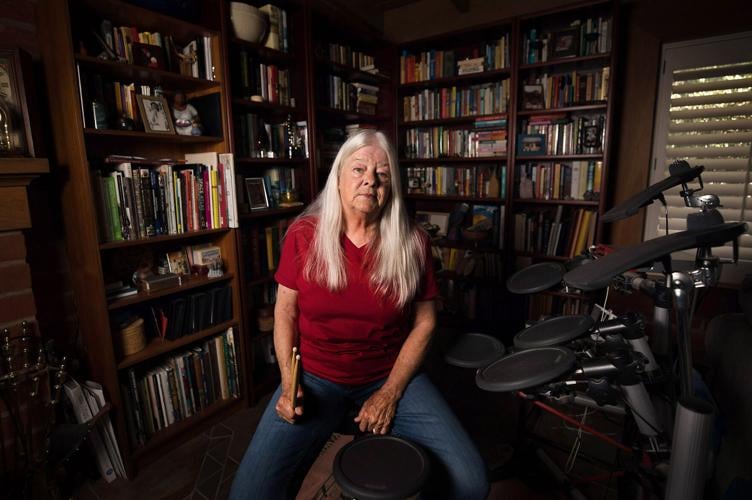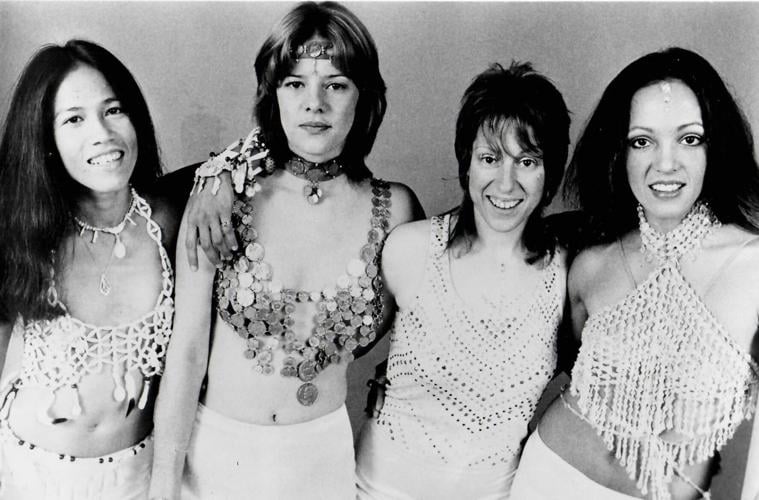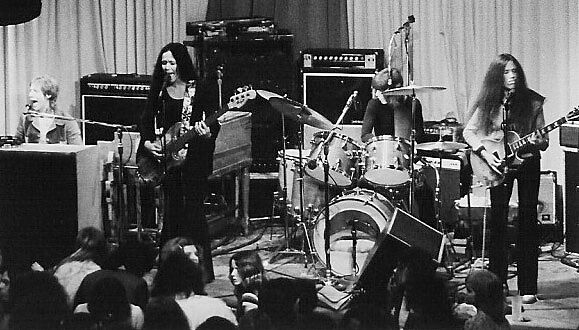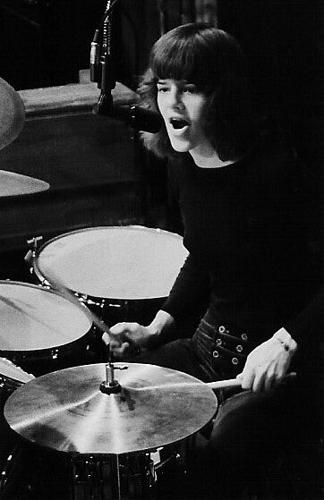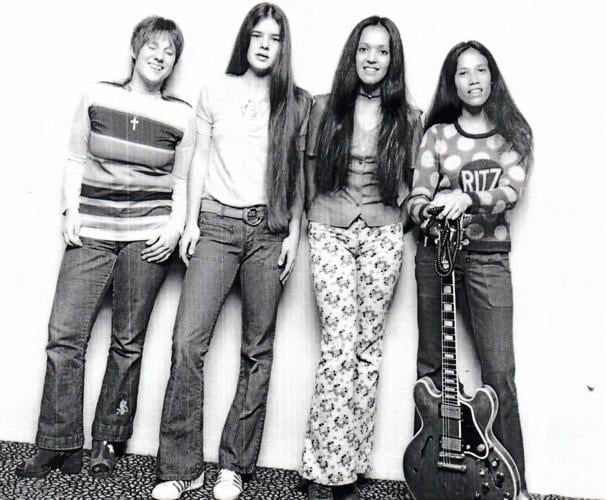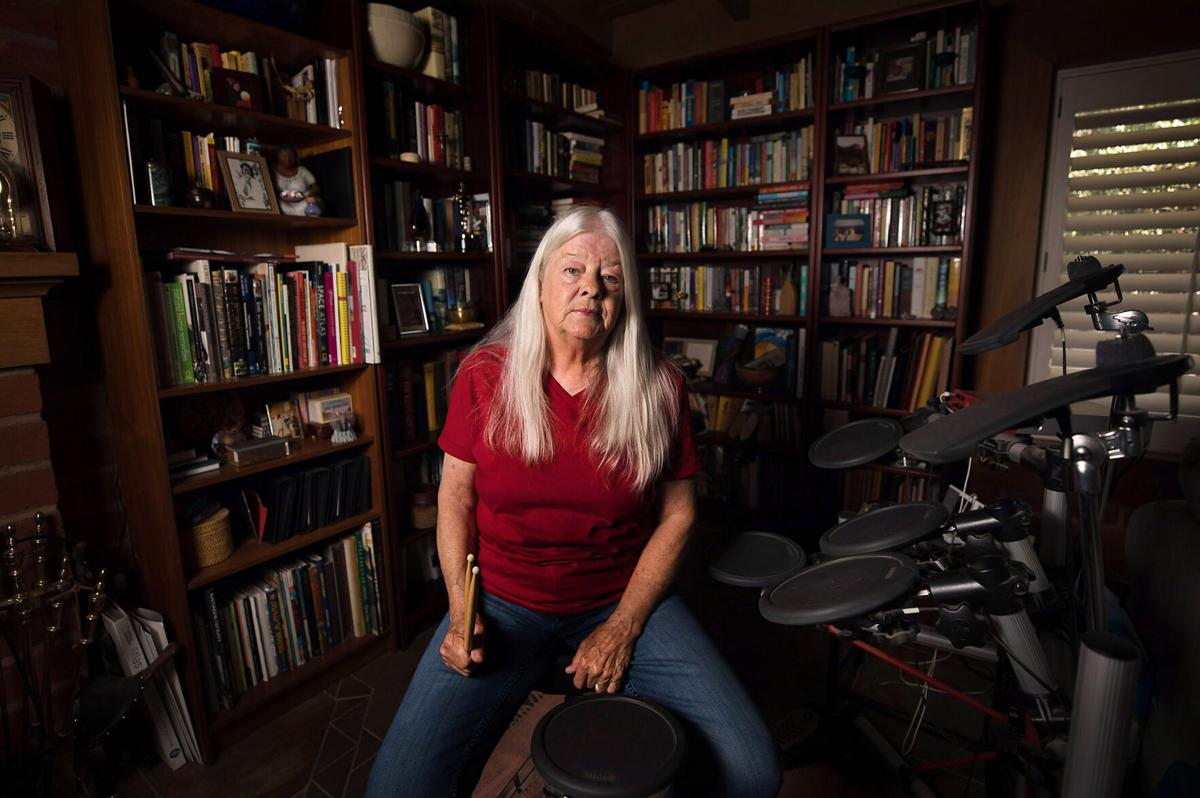Alice de Buhr likes to say that her all-female band Fanny didn’t quite break the glass ceiling for women in rock ‘n’ roll.
But they sure put some mighty big cracks in it.
They also paved the way for generations of all-female bands that followed, from the Runaways to the Go-Gos to the Bangles.
Fanny was the first all-female rock band signed to a multi-record major label deal and the first to achieve Top 40 success, landing two singles on the charts.
But not many people had heard of the band before Warner Music Group‘s Rhino Handmade imprint released “Fanny — First Time in a Long Time: The Reprise Recordings.”
The band, which played their own instruments and wrote their own music, released four albums between 1970-73 on Warner Bros. Records imprint Reprise Records. A reiteration of the lineup produced a fifth album on a different label in 1974.

From left, June Millington, Alice de Buhr, Nickey Barclay and Jean Millington of the all-female rock ‘n’ roll band “Fanny” pose for a promotional photo in 1973.
“What we did mattered,” said de Buhr, the band’s drummer who has called Tucson home since the mid-1980s. “Fanny did open the door for a lot of the female bands that came after us.”
Rhino’s 2002 four-CD anthology sparked a renewed interest that led Real Gone Music, which shines a spotlight on often overlooked recordings and artists, to re-release the band’s eponymous 1970 debut album a few years ago.
De Buhr had hoped they would also revisit “Charity Ball,” which came out in 1971, or the 1972 album “Fanny Hill,” but Real Gone executives said they didn’t have the money to do any more.
“So I put up $4,000 to put out ‘Charity Ball’,” de Buhr said.
She put up another $4,000 from her own money to release the other two career albums — “Fanny Hill” and “Mother’s Pride” — between 2007 and 2009.
“I still get orders for them” on the website (fannyrocks.com) that she runs for the band, de Buhr said.
Interest in the band picked up more steam last year when filmmaker Bobbi Jo Hart released the documentary “Fanny: The Right to Rock.” The film, which won prizes in a handful of film festivals, features live performance clips, interviews with band members and on-camera appearances by Def Leppard frontman Joe Elliott, folk-rocker Bonnie Raitt, the Runaways lead singer Cherie Currie, rocker Todd Rundgren and Go-Gos bassist Kathy Valentine talking about Fanny’s historical contributions to women in rock.

From left to right, Nickey Barclay on the keyboard, Jean Millington on bass guitar, Alice de Buhr on drums and guitarist June Millington of the band Fanny perform at the Whisky a Go Go in Los Angeles in 1972.
The Loft Cinema will screen the film on Wednesday, Sept. 7. On Friday, Sept. 9, Real Gone Music is releasing “Fanny Hill” and “Charity Ball” on vinyl with the original album art and lyrics liner notes.
“I’m thrilled that people are finding out about the band because we were really good,” said de Buhr, who will lead a Q&A session at Wednesday’s Loft screening. “The sound that the four of us created — June (Millington), Jean (Millington), me and Nickey (Barclay) — each of us were really good on our instruments. There was a magic to that Fanny sound and I love it that more people are finding out about us.”
The Fanny revival comes 55 years after de Buhr graduated high school and left her Iowa hometown for Los Angeles to chase a dream. A drummer since grade school, she answered an ad posted on a music store bulletin board for the all-girl band the Svelts, anchored by sisters June and Jean Millington. She got the job but the band went nowhere.
A year later, de Buhr and the Millington sisters took another stab at their rock ‘n’ roll dream, playing Motown covers under the name Wild Honey. After trying to get a foothold in a Los Angeles music scene dominated by men, the band was ready to throw in the towel when they were discovered in 1969 at the famous Troubadour Club by the secretary of music producer Richard Perry.
Perry was searching for an all-female act and convinced Warner Bros. Records to sign them to Reprise, sight unseen. They changed their name to Fanny and embarked on what would become a historic musical journey.
Over the next five years, the band released four albums, toured around the country and abroad including opening for Slade, Jethro Tull and Humble Pie, and gained a big following in the United Kingdom. They appeared on popular TV shows including “The Sonny and Cher Show,” “American Bandstand,” “The Old Grey Whistle Test” and “Beat-Club,” a German music show that presented full concerts with bands.
They had two singles land in the Top 40, but their record sales still lagged behind their male counterparts. De Buhr said they received little to nothing from album sales revenue. They also forfeited the rights to their songs under the deal they made with Warner Bros.

Alice de Buhr on the drums with the band, Fanny, performs at the Whisky a Go Go in 1972.
“We basically signed our lives away just for the opportunity to record,” said de Buhr, who worked for A&M Records for years after she left Fanny. “We just wanted a chance to get our music out there and have people hear it. We were naive enough; we didn’t know the business.”
De Buhr said she hopes that the renewed attention on Fanny takes the band from obscurity to its rightful place in rock ‘n’ roll history.
“My goal is that people go, ‘Oh, Fanny. I remember them. I know that band. Their music was good,’” she said. “Just to know that we were there 52 years ago.”
She even wishes aloud that the band will one day find its way into the hallowed halls of the Rock & Roll Hall of Fame.
“We didn’t have a major hit, but the reason Fanny should be included in the Rock & Roll Hall of Fame is because of the ceiling that we cracked,” she said. “We didn’t break it, but we cracked it. What we did mattered.”

Drummer Alice de Buhr, second from left, and her band Fanny made history in the early 1970s, but for nearly 50 years, their story had never really been told. Until now.
De Buhr hasn’t played drums professionally in some time, although these days she has an electric drum set sitting in the living room of the home she shares with her wife, Gloria Schmetzer. She spends a few hours a day working on the band website, which she launched in 2002. For a few years she did a regular podcast highlighting the band’s music and members; the podcasts are still posted on the site.
Every once in awhile she pops onto YouTube to read the comments on the band’s videos.
“People will say, ‘How did I not know about this band?’ Hopefully people will now know about this band,” she said. “That’s all I can hope.”
Even if the recent spotlight fades and the band remains all but a footnote in history, de Buhr said she has no regrets.
“I have the experience that some people would die for,” she said. “I recorded at Apple Studios. I met the Beatles and hung out with Mick Jagger. Those experiences are great memories. I can close my eyes and I can easily be back on stage at the Rainbow Studio in London.”


